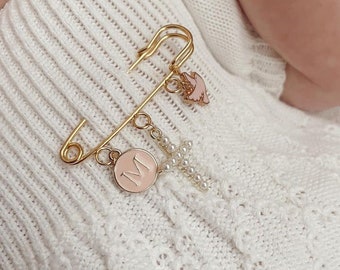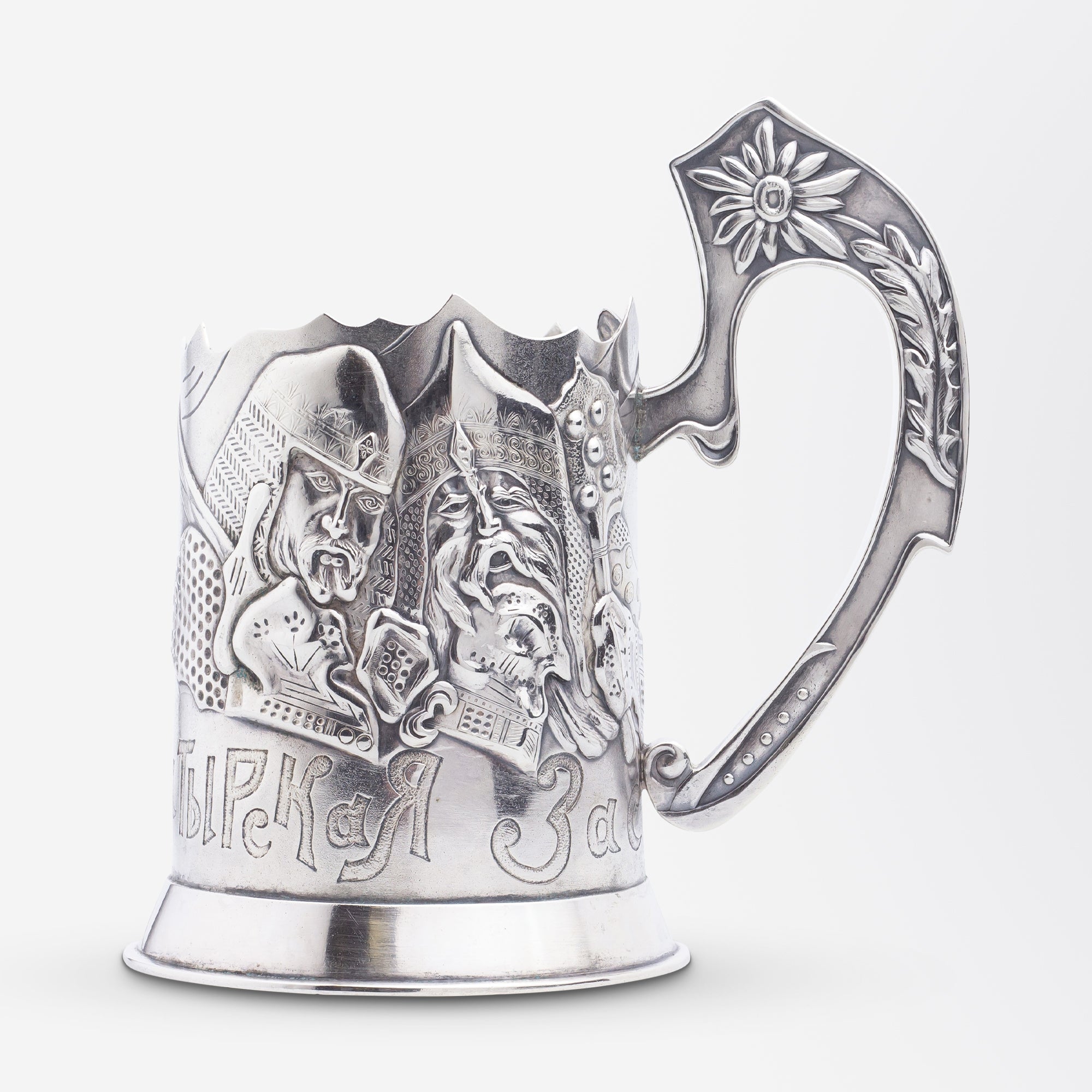This is a most unusual Russian 875 silver Caucus design with interesting cabochons. The design hails from the Caucus or Caucasian region, meaning the area immediately around the Caucuses mountains in Russia. This is an incredibly complicated area ethnically and linguistically. However, the culture is remarkably uniform, and there are similarities in shipping traditional ethnic attire.
This style of pin is a traditional element in these ethnic costumes. It would have been worn at the collar of an elaborately embroidered dress. (See pictures)
The design is exceptionally beautiful with dangles exhibiting a repousse pattern reminiscent of floral embroidery and cabochons of faceted polished natural Amber. The Amber is an uniform opaque burnt umber, the color of a rich Carnelian. It is a magnificent ancient design with a folk art feel. Lovely...
The pin has been hallmarked with the Russian Star, Hammer and Sickle. This symbol been used on silver objects from 1958 to the present. It is also stamped 875 or Zolotnik meaning 87.5% pure silver and 12.5% copper or other metals. This is the Russian silver standard. The letter P is the Riga silver hallmark. This is quite interesting for Riga Is Latvia's capital and has been independent from Russia since 1918. It is also where Baltic Amber is harvested.
The pin was crafted in 1962. It is in remarkable vintage condition and measures 1.25”.
875 Silver:
84 zolotnik Russian silver has the equivalent millesimal fineness of 875. The alloy contains 87.5% pure silver and 12.5% copper or other metals.
A zolotnik (in Russian: золотни́к; abbr.: zol.) was a small Russian unit of weight, equal to 0.1505 avoirdupois ounces, or 4.2658 grams (about 65.83 grains). Used from the 10th to 20th centuries, its name is derived from the Russian word zoloto, meaning gold. As a unit, the zolotnik was the standard for silver manufacture, much as the troy ounce is currently used for gold and other precious metals.
About Riga:
Riga, Latvia's capital, is set on the Baltic Sea at the mouth of the River Daugava. Riga is considered a cultural center for the region.
About Amber:
Amber is fossilized tree resin, which has been appreciated for its color and natural beauty since Neolithic times. Much valued from antiquity to the present as a gemstone, amber is made into a variety of decorative objects. Today Baltic amber is in great demand and short supply. The great mines in Sambia, the lone outpost of the Russian Federation in the Kaliningrad Oblast situated on the Baltic Sea between Poland and Lithuania, were flooded in 2004. These mines are said to contain upwards of 85% of the world's supply of Baltic amber. The Russian government has, for the most part, allowed it to stay submerged. Production is rumored to be down to 90 per cent or less of what it was previously. For those of us who have studied relations between Russian and Poland, this comes as no surprise. At this time, Poland is a leader in the production of Amber jewelry. The designs from Poland are innovative relying on silver work to enhance the smaller quantity/stones they currently have available.
Please review the photos carefully and email with any questions you may have prior to making a purchase.
Enjoy.
Product code: Russian Traditional Caucus Design-875 Silver-(1.25”) shipping 1962


